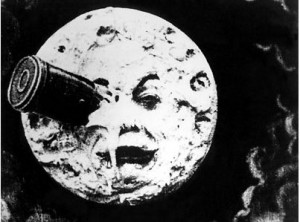From Zachary Crockett’s Priceonomics post which recalls a proposed mission scrubbed from the collective memory, the time when the United States considered a Sagan-aided plan to put a kaboom on the moon:
“As far back as 1949, Chicago’s Armour Research Institute (known as the IIT Research Institute today) had studied the effects of nuclear explosions on the environment and atmosphere. In 1958, the program was approached by the United States Air Force and asked to determine the hypothetical consequences of a nuclear explosion on the Moon. Sensing that national morale was low after the Soviets launched Sputnik, the U.S. government coined a plan: they’d nuke the Moon, causing an explosion so big that it’d be visible from Earth. They hoped the explosion would not only boost the confidence and approval of Americans, but serve as a show of power to the Soviets.
Led by renowned physicist Leonard Reiffel, a ten-person research team was formed under a rather auspicious project title: ‘A Study of Lunar Research Flights’ (or, ‘Project A-119’). Immediately, the team began studying ‘the potential visibility of the explosion, benefits to science, and implications for the lunar surface.’ An essential element to ensuring that the explosion would be seen from Earth was determining the mathematical projection of the expansion of the resulting dust cloud in space; Carl Sagan, a young doctoral student at the time, was brought in to help find an answer.”
Tags: Carl Sagan, Leonard Reiffel

